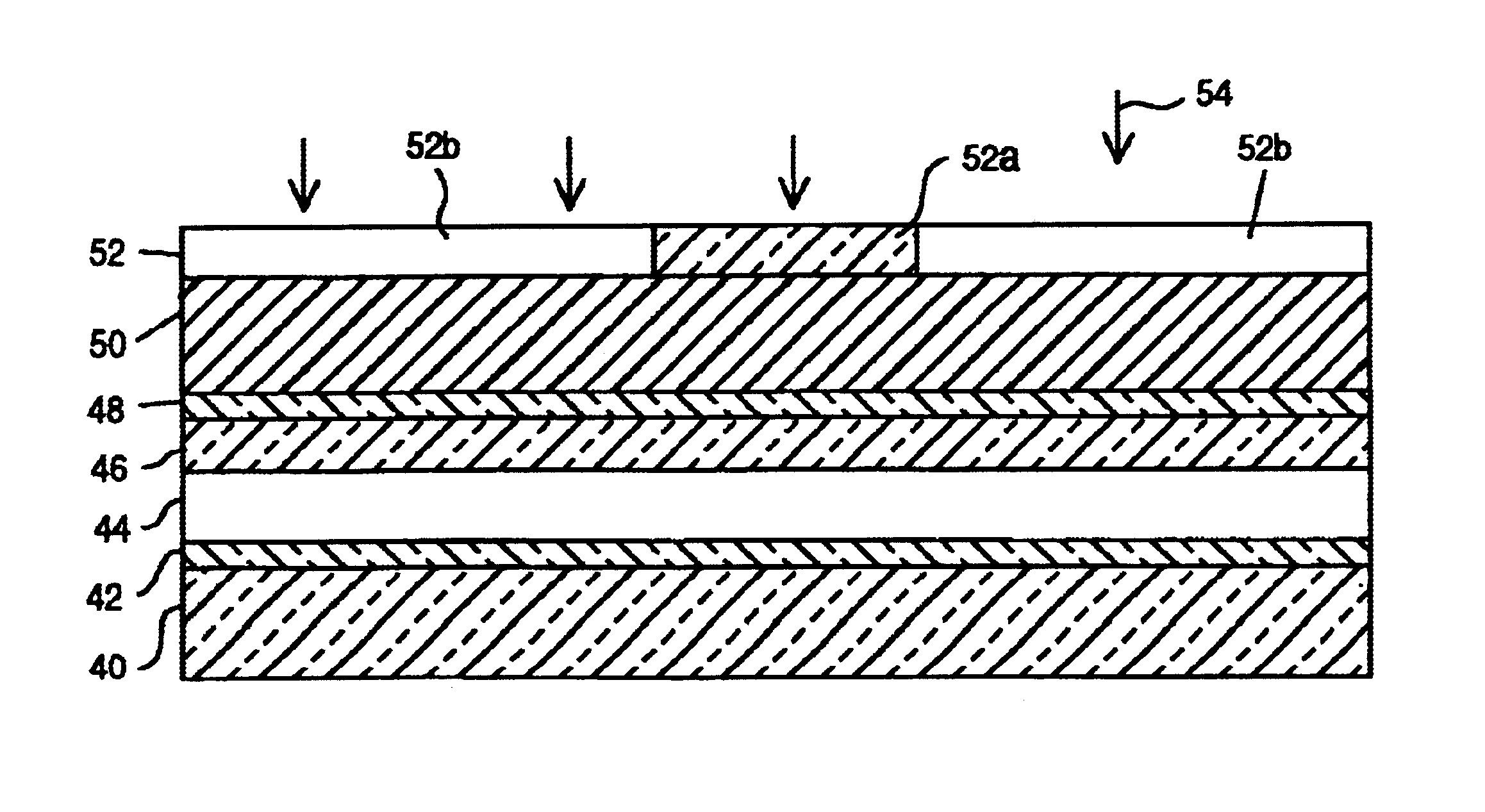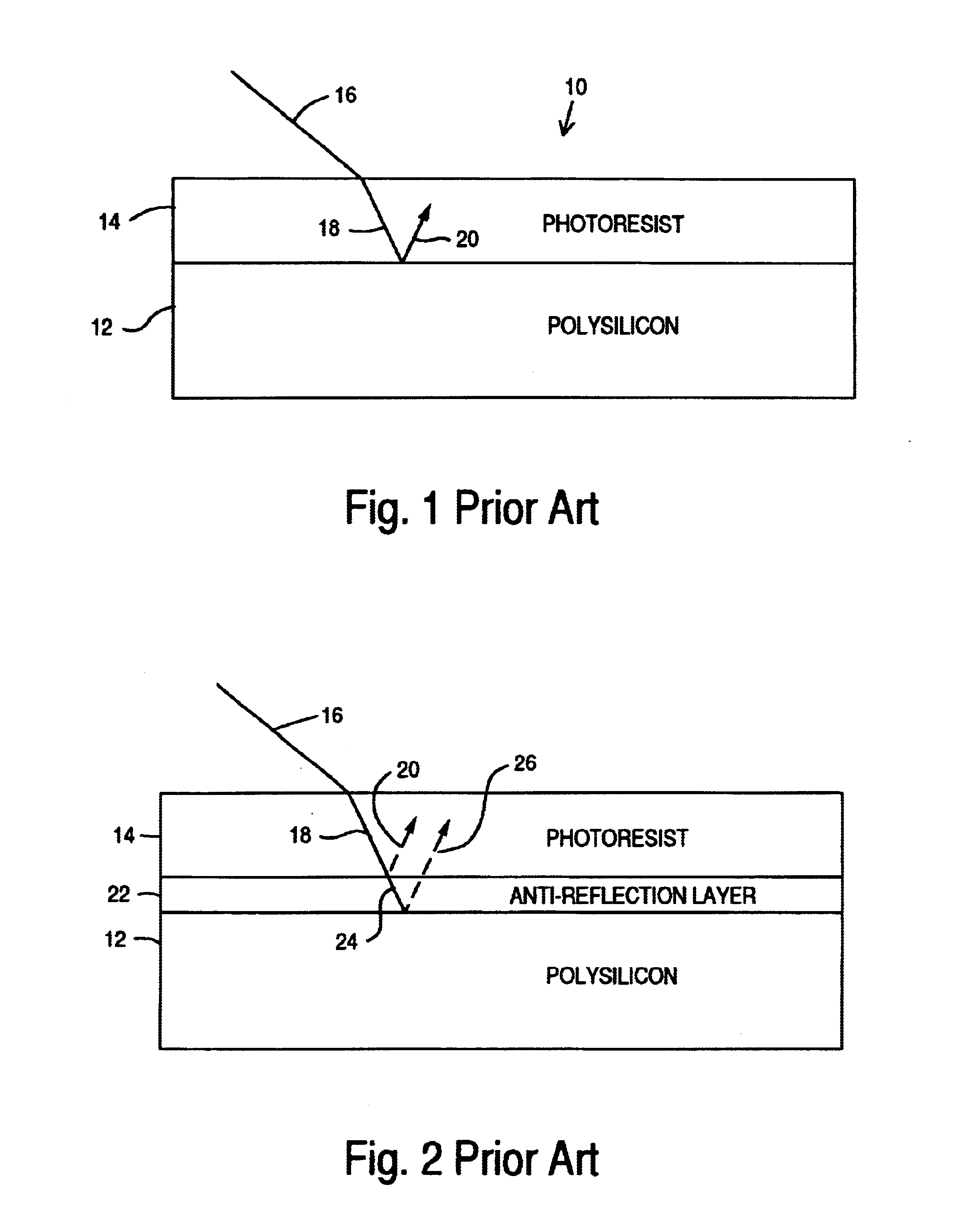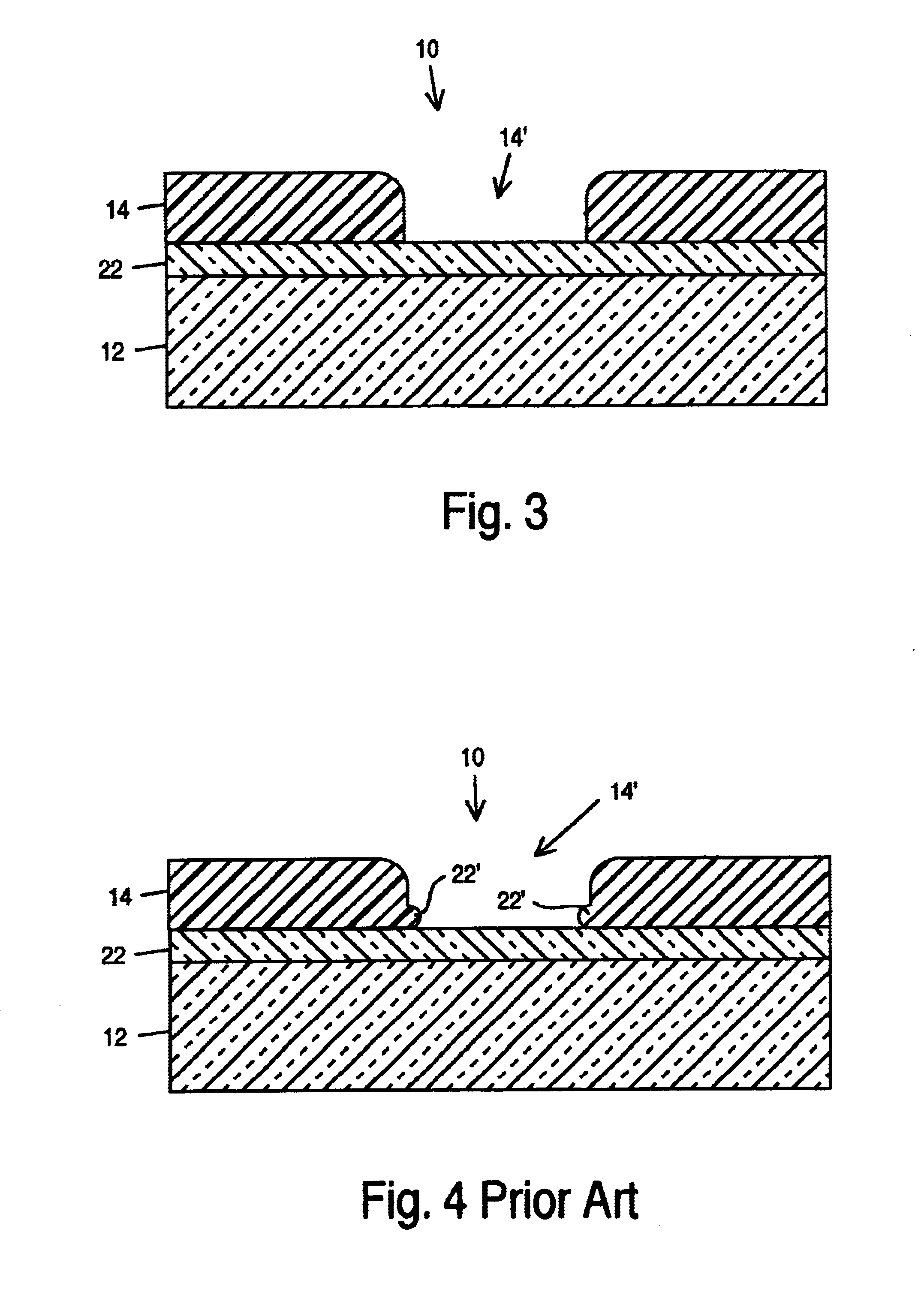Process for forming bottom anti-reflection coating for semiconductor fabrication photolithography which inhibits photoresist footing
- Summary
- Abstract
- Description
- Claims
- Application Information
AI Technical Summary
Benefits of technology
Problems solved by technology
Method used
Image
Examples
example i (
APPLIED MATERIALS AMT5000)
[0073]The silicon oxime layer 46 is formed under the following conditions.[0074]Silane (SiH4) flow rate: 60±10 sccm[0075]Nitrogen flow rate: 400±100 sccm[0076]Nitrous oxide (N2O) flow rate: 40±5 sccm[0077]Pressure: 3.5±0.3 torr[0078]RF power: 150±20 watts[0079]Temperature: 400±10° C.[0080]Processing time: 6±1 seconds (for 300 angstrom thickness)[0081]Spacing (S in FIG. 7) between shower head 72 and surface of wafer 66: 460±20 mils (11.68±0.51 millimeters)[0082]Layer thickness: 200 to 400 angstroms
[0083]After forming the silicon oxime layer 46, the container 62 is pumped down for approximately 10 seconds, and the barrier layer 48 is then grown in-situ on the layer 46. The conditions for growing the barrier layer 48 are as follows.[0084]Nitrous oxide (N2O) flow rate: 190±10 sccm[0085]Pressure: 3.5±0.3 torr[0086]RF power: 150±20 watts[0087]Temperature: 400±10° C.[0088]Processing time: 20±5 seconds
[0089]Spacing (S in FIG. 7) between shower head 72 and surface o...
example ii (
NOVELLUS CONCEPT I System)
[0091]The silicon oxime layer 46 is formed under the following conditions, all of which are variable from the listed values by approximately ±10%.[0092]Silane (SiH4) flow rate: 162 sccm[0093]Nitrogen flow rate: 8,000 sccm[0094]Nitrous oxide (N2O) flow rate: 250 sccm[0095]Pressure: 2.4 torr[0096]RF power: 300 watts[0097]Temperature: 400° C.[0098]Processing time: 2.7 seconds[0099]Soaktime (temperature ramp-up time): 30 seconds
[0100]Spacing (S in FIG. 7) between shower head 72 and surface of wafer 66: 550 mils (13.97 millimeters)[0101]Layer thickness: 300 angstroms
[0102]After forming the silicon oxime layer 46, the container 62 is pumped down for approximately 10 seconds, and the barrier layer 48 is then grown in-situ on the layer 46. The conditions for growing the barrier layer 48 are as follows.[0103]Nitrous oxide (N2O) flow rate: 700 sccm[0104]Pressure: 2.4±0.3 torr[0105]RF power: 750 watts[0106]Temperature: 400° C.[0107]Processing time: 15 seconds
[0108]Spa...
example
[0123]A silicon oxime film was formed by PECVD in a conventional PECVD reactor under the following conditions:
[0124]
temperature400° C.pressure2.5 Torrpower190 wattsGap425 milsSiH450-60 sccmN2O35-45 sccmN2500 sccm
[0125]Under the above conditions, the deposition rate was about 75-85 Å / sec. and the uniformity measured at 1 to 2%, 1σ. Upon analysis, the silicon oxime was found to contain about 15 to about 20 atom percent oxygen, and about 10% to about 20 atom percent hydrogen. A silicon oxime film formed under the above conditions displays absorption characteristics at 365 nm very different from conventional silicon oxynitride films. For example, a silicon oxime film having a thickness of about 350 Å to about 400 Å on polysilicon exhibits a reflectivity of about 1 to 5%; whereas, in order to achieve the same level of reflectivity, i.e., about 1 to about 5%, a conventional silicon oxynitride film requires a thickness of about 700 Å to about 1100 Å.
[0126]It was unexpectedly found that in ...
PUM
 Login to View More
Login to View More Abstract
Description
Claims
Application Information
 Login to View More
Login to View More - R&D
- Intellectual Property
- Life Sciences
- Materials
- Tech Scout
- Unparalleled Data Quality
- Higher Quality Content
- 60% Fewer Hallucinations
Browse by: Latest US Patents, China's latest patents, Technical Efficacy Thesaurus, Application Domain, Technology Topic, Popular Technical Reports.
© 2025 PatSnap. All rights reserved.Legal|Privacy policy|Modern Slavery Act Transparency Statement|Sitemap|About US| Contact US: help@patsnap.com



